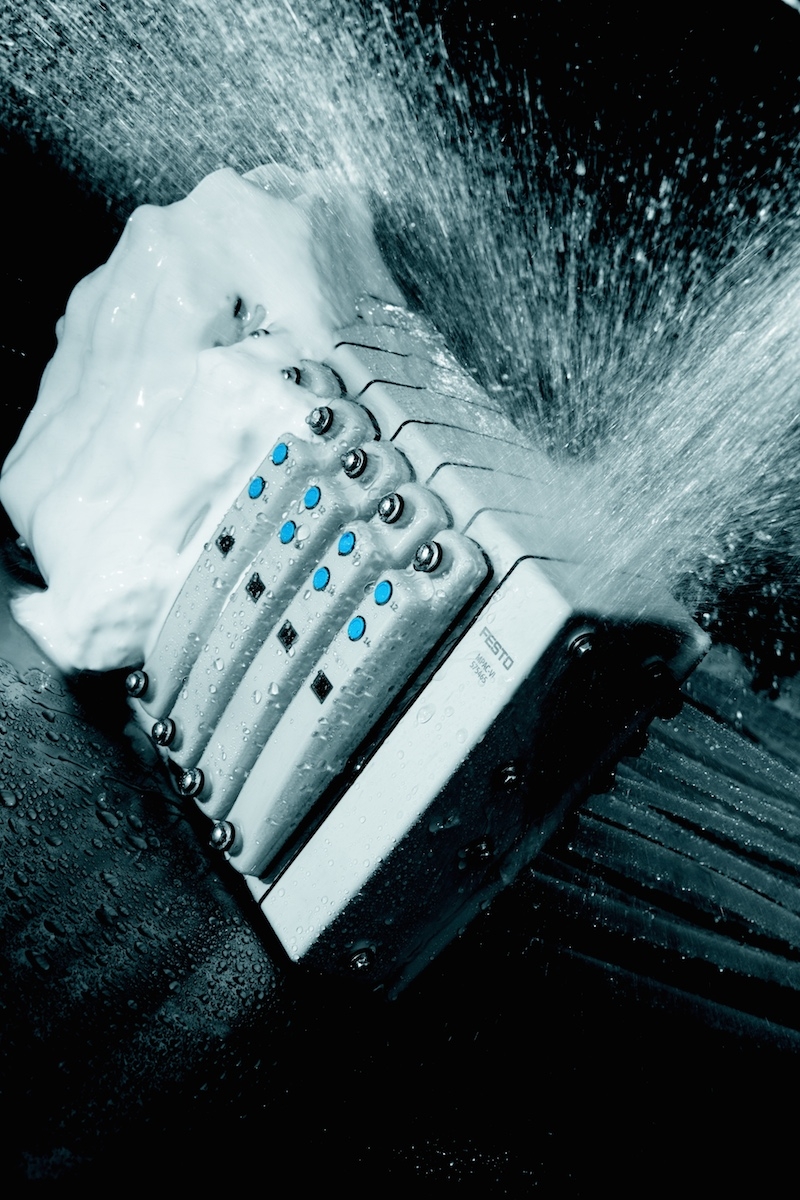
Festo MPA-C valve terminal for food production
May 28, 2018
By Manufacturing AUTOMATION

May 28, 2018 – Today’s stringent food safety rules require production systems that are easily and thoroughly cleanable to a very high standard, yet extremely reliable. Festo says that is the key deliverable of its new MPA-C valve terminal, the centrepiece of its Clean Design series of products for hygienically critical food production systems.
With its IP69K and CRC4 class rating, the MPA-C can be located near the food handling area of the machine, says Festo, explaining that flexibility gives machine and process designers additional latitude to save space, eliminating the need for a larger control panel required to protect the pneumatic valve terminal. Faster cycle times can also be realized because the compact MPA-C can be mounted close to the pneumatic actuators minimizing long tubing lengths which improves air flow performance, it adds.
From an operational standpoint, Festo’s MPA-C can handle high pressure cleaning, cleaning foams or harsh operating conditions. Its ideal housing surface design ensures cleaning agents can run off, significantly reducing time and effort during wash downs, notes the company, adding that troubleshooting is fast thanks to LEDs on the valves, and valves are easily replaceable, minimizing downtime. The valve terminal boasts single, modular sub-bases for up to 32 valves or solenoid coils, NSF-H1 lubrication and FDA certified materials. It enables individualized configuration possibilities, with electrical interfaces on the front or back, with multi-pin, fieldbus or Ethernet via CTEU/CTEL with or without manual override, allowing for 1-32 pressure zones. And it is complemented by other Clean Design products such as NPCK/PFAN tubing/fitting combinations, NEBV electrical connecting cables and DSBF or stainless steel CRDSNU cylinders. New for 2018, the MPA-C line also offers enhanced safety for exhaust air build-up when the non-return valve option is employed in exhaust ducts 3 and 5.
Advertisement
- Mencom debuts flexible Modbus Gateways for harsh environments
- Why ERP removes the need for manufacturing execution systems